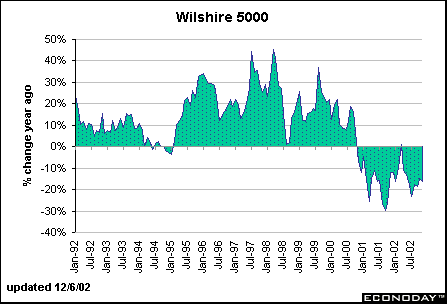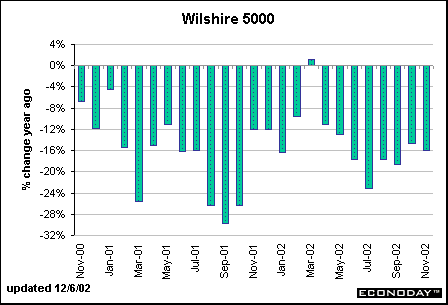
Long Term Perspective
Fed chairman Alan Greenspan set the financial markets on edge several years ago when he first commented on the stock market by making an observation on the "irrational exuberance" of investors. While Greenspan and friends don't tend to comment directly on valuation of stock prices too often, they constantly are talking about the ubiquitous "wealth effect," which allegedly caused consumers to spend more than they earned in income in the late 1990s. There is no question that Fed governors and district bank presidents monitor stock prices closely. The Wilshire 5000 is a broad market indicator that incorporates both the impact from the old economy (such as the Dow Jones Industrials) and the new economy (such as the NASDAQ composite.)

Short Term Perspective
The Wilshire 5000 jumped 5.9 percent in November after a 7.5 percent in October, but was still down on a year-over-year basis in both months. As long as stock prices are weak, it suggests that consumer spending could be dampened by the wealth effect, rather than enhanced by it. This will prevent the Fed from raising the federal funds rate target very quickly.



Alternative Inflation Measures • Gold Prices • Employment Cost Index • Civilian Unemployment Rate

Pool of Available Labor •
Nonfarm Productivity • Treasury Yields • Stock Prices • Fed Monetary Policy Summary
|